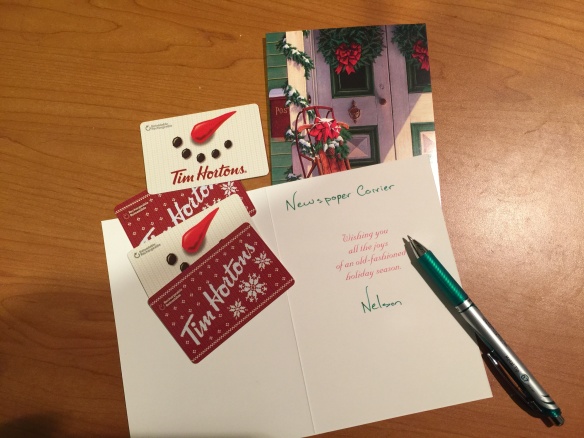 At its core, The Kite is about 11-year-old Keith’s search for the perfect gift for his friend Daddy Sherry, whose 111th birthday is fast approaching.
At its core, The Kite is about 11-year-old Keith’s search for the perfect gift for his friend Daddy Sherry, whose 111th birthday is fast approaching.
I only recently read this novel by Alberta author W.O. Mitchell, after having seen the stage adaption this summer at the Rosebud Dinner Theatre.
Rosebud is a hamlet of fewer than 100 people, near Drumheller, Alberta. Each year, the community hosts a multi-play theatre season.
Keith’s desire to find the right gift is similar to the question with which many frontline leaders will be familiar. What is the best way to recognize staff for how they contribute and what they achieve?
Keith’s first impulse was to use the money he had saved to purchase a gift.
“I got a dollar and twenty cents saved up,” he tells freelance writer David Lang, to whom he turns for advice. David has come to the community to write an article for Monarch magazine about Daddy Sherry, who is believed to be the world’s oldest person.
“I have a feeling that he would get more pleasure out of something you made yourself than he would out of something you bought with your dollar and twenty cents,” David says.
Keith protests that anything he were to make would not be worth giving.
“Anything a kid like me would make — it’d be a haywire, shaganappi thing …“
“That’s not the point, Keith. Anything you’d buy would be something that anybody with a dollar and twenty cents could walk into a store and buy. If you made it yourself then Daddy would know that you had — that it took you time to make it — and care … ”
Having accepted David’s advice, Keith faced another challenge. “I still don’t know what to make and it’s harder to figure out a present to make for a person than it is to figure out a present to buy for a person.”
To discover the right gift, Keith spent time with Daddy, listening to what he said, as managers and supervisors might do when asking 7 questions to find ways to recognize staff Appropriately.
As the title of the play and book suggests, the result of Keith’s research is a decision to build a kite, which he and Daddy go off to fly as the story ends.
How does this relate to staff recognition? What can you “make?” What could your hands produce that a recipient would value because of the time and care you took to make it?
While you may never make a kite for a staff member, there are other hand-made possibilities.
What comes to mind first is a handwritten thank-you note. When the message of appreciation is obviously crafted by your hand it shows that you cared enough to invest your time to write the words.
That simple card will have more impact than the same words would composed with a computer keyboard to produce a letter or an email.
Short of time? No time to write a thank-you note? Even a few words of appreciation on a sticky note can be meaningful to the recipient because you took the time to write them.
And there is always food. Bring in a batch of home-baked cookies to thank the team for its efforts to complete a project on time. Or invite the staff to join you in the parking lot where you will prepare lunch on a barbecue to show your appreciation.
Because no gesture of appreciation should ever create work for the recipients, take responsibility for the post-barbecue cleanup.
At one school where I worked, the staff prepared a potluck lunch to thank volunteers who helped in their classrooms. The message: because you invested your time to help our students, we invested our time to prepare a meal for you to express our gratitude.
This was a much more powerful expression than a catered lunch, a certificate of appreciation, or identical gifts for each of the volunteers.
P.S. Maybe you could make a kite and present it to a staff member who “helped us soar to new heights.”
Image credit: bigstockphoto.com


